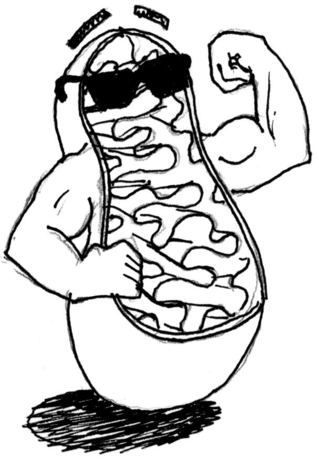The Mighty Mitochondria: Powerhouse of the Cell
Mighty Mitochondria
I produce ATP,
That stands for energy!
You couldn't move a muscle
If it wasn't for me.
To all other organelles,
You know I've got you beat.
I'm the strongest of the strong
I am without defeat.
So, you better watch out!
Here comes the powerhouse!
That stands for energy!
You couldn't move a muscle
If it wasn't for me.
To all other organelles,
You know I've got you beat.
I'm the strongest of the strong
I am without defeat.
So, you better watch out!
Here comes the powerhouse!
Though mitochondria may sound like a complicated over-your-head scientific terminology that leaves you scratching your head as you attempt to pronounce it properly...it's really not as difficult as it seems!
What is it?
The mitochondria is the organelle(within both plant and animal cells) that transforms the food you eat or energy absorbed into ATP (energy). For plants, this process is called photosynthesis (through sunlight), and for animals, it is called cellular respiration.
Some cells require more energy than others, so they contain more mitochondria. For example, brain cells need lots of energy in order to communicate with each other and with other parts of the body. It's the same for muscle cells, as they need extra energy to help you maintain posture and
contract muscles!
Composition of the Mitochondria
The mitochondria are round and tube-like in shape. They are surrounded by an outer membrane, followed by an inner membrane which has many folds. Within, there are cristae and the mitochondrial matrix. The matrix holds ATP synthase particles, ribosomes, granules, and DNA.Now, isn't that just amazing? How can something so small hold so much? Mitochondria are the reason you can breathe, move and even think. You wouldn't be able to survive without these little things!
This video illustrates the importance and utter magnificence of mitochondria within the cell.
Join mitochondria lovers all around the world!
Don't you forget it!
MITOCHONDRIA IS THE POWERHOUSE OF THE CELL!
References
- "What Do Mitochondria Do?" Wellcome Trust Centre for Mitochondrial Research. Web. 23 May 2015.
- Nature.com. Nature Publishing Group. Web. 24 May 2015.
- "CELL AND ORGANELLE NOTES." CELL AND ORGANELLE NOTES. Web. 25 May 2015.



.svg/1280px-Animal_mitochondrion_diagram_en_(edit).svg.png)


















